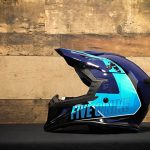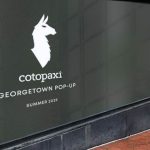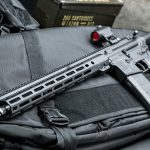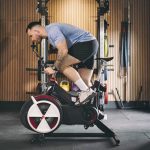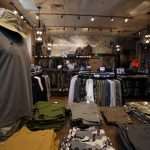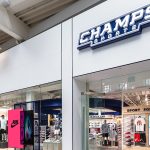In spite of a double-digit increase in sales, Columbia reported a sharp decline in net income for the second quarter, largely due to lower margins and higher SG&A expenses. The decline in margins was caused by Columbias expanded product offering, which managed to boost volume, but shrink margins due to the myriad of SKUs the company was producing. The company was also “a bit to aggressive” with their pricing this quarter. SG&A expenses were primarily from the increased head count and new hires to support growth in the company.
U.S. sales were driven by footwear shipments. U.S. Sportswear shipments increased “modestly” in the quarter driven by knits and woven tops. Outerwear sales in the second quarter were down due primarily to an anticipated shift in timing of shipments in the third quarter. U.S. apparel sell-through rates have been “very good” this spring and footwear sell-through have been solid. East coast sell-through started slow, but improved significantly as the season progressed. Sell-through rates in the southern states have been “very good.”
Canada sales increased 17.5% excluding changes in currency exchange rates. Apparel shipments rebounded nicely in Canada due to sales of knits and woven tops, pants and shorts, and insulated parkas and shells. Retail sell through of apparel products has been solid this spring and early indications for the spring 2007 apparel line have been very good. The retail environment in Canada was described as “solid.”
Europe second quarter currency neutral sales increased 17.3% due to sportswear and outerwear shipments partially offset by softness in European footwear. Columbias new sales team in Germany and the UK are now in place and the company will continued to invest in distribution, product merchandising, and sales management in the region.
Outerwear sales increased due to non-insulated shells and soft shells. Outerwear shipments were strong in other international, Europe, and Canadian markets. Sportswear sales were driven by Knits and woven tops and pants. International growth in Europe, other international, and Canada led global sales for the category.
Footwear sales were up due to strong sell-through in spring sandals and trail shoes. This number was also helped by continued closeout shipments of 2005 cold weather footwear styles at reduced margins. Footwear shipments were strongest in the U.S. during Q2. Equipment sales more than doubled due to Mountain Hardwears tent, pack, and sleeping systems. In addition, sales of Columbia back packs and day packs also increased globally since the company has taken the license for Columbia branded equipment products in-house.
Mountain Hardwear sales were $10.9 million during the second quarter, a 26.4% increase over last year, driven by strength in sportswear and equipment sales to the specialty distribution channel. Much of the increase in the brands sales was said to be due to the feeling that “the competition is becoming more broadly distributed.” Mountain Hardwear anticipates continued strength in sportswear with future sales growth both domestically and internationally. Sorel sales were $2.5 million verses $2.6 million last year.
Montrail’s order management system has been integrated with Columbia’s and the brands manufacturing and distribution system in the U.S. and Europe are anticipated to be fully combined by year end. Montrail’s sales and product line management personnel are now on-site in the Portland headquarters. Sell through of the spring 2006 line has been “solid,” and the company will continue to develop distribution in outdoor specialty, specialty running, and sporting goods chains.
Pacific Trail’s sales orders and production systems are now being managed by Columbia’s order management system and operations team and distribution systems are expected to be fully integrated by year end. COLM management said that the near-term complexity of the integration is high, but they see opportunity in the future.
During a conference call with analysts and the media, Columbia CEO Tim Boyle said that he sees Pacific Trails role in sporting goods retailers to “become somewhat less” while the two brands will continue to coexist in mid-tier department stores. The main opportunity for Pacific Trail will be through warehouse clubs and value-oriented big box chains. As far as Moonstone, Black Dot and Roffe ski pants, Boyle said “Were still going to decide how exactly we want to use those things in various markets.”
For the 2006 fiscal year, Columbia management expects revenue growth of approximately 11% with a net income decline of approximately 9%. This will be caused by a 180 basis points gross margin contraction and an SG&A expansion of approximately 60 basis points.
| Columbia Sportswear | |||
| Second Quarter Results | |||
| (in $ millions) | 2006 | 2005 | Change* |
| Total Sales | $211.6 | $186.2 | +13.6% |
| U.S. Sales | $118.9 | $110.3 | +7.8% |
| Canada Sales | $12.5 | $9.7 | +28.9% |
| Europe Sales | $29.1 | $25.4 | +14.6% |
| Other Intl | $51.1 | $40.8 | +25.2% |
| Outerwear | $43.2 | $40.0 | +8.0% |
| Sportswear | $112.2 | $102.4 | +9.6% |
| Footwear | $43.2 | $34.3 | +25.9% |
| Accessories | $6.0 | $6.8 | -11.8% |
| Equipment | $7.0 | $2.7 | +159% |
| Gross Margin | 38.5% | 39.5% | -100 bps |
| Net Income | $4.8 | $6.3 | -23.4% |
| Diluted EPS | 13¢ | 16¢ | -18.8% |
| Inventories* | $272.2 | $215.9 | +26.1% |
| * at quarter end | |||


